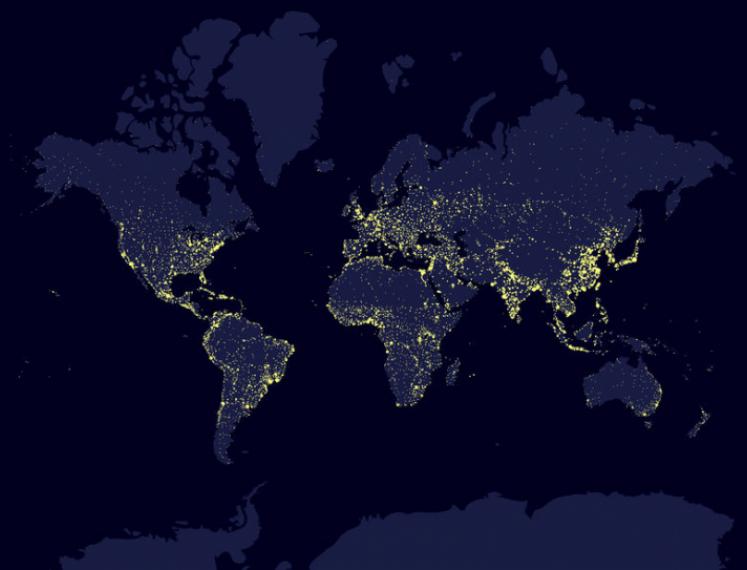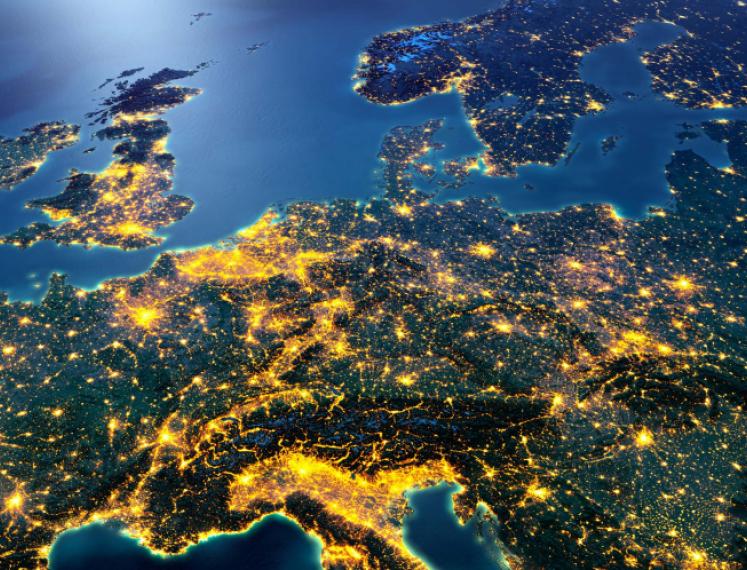
Planetary Boundaries and the Anthropocene
What are planetary boundaries? And do they have a relationship with the current outbreak of the coronavirus? Earth system scientist Will Steffen was invited to Groningen by the Sustainable Society Office of the University for a lecture on planetary boundaries and the Anthropocene on the 20th of April. The lecture has been postponed to October 2020, but we already asked him some questions about his work on planetary boundaries. We selected a few on our blog.
What are planetary boundaries according to you?
“Planetary boundaries were developed in 2007-2008 by a group of 25 scientists, led by a scientist named Johan Rockstrom, who is now director of the Potsdam Institute for Climate Impact Research in Germany. The idea is to look at our planet as a single system and to look at the minimum number of guardrails that we need to observe to keep the planet in a stable state. We try to understand how the earth operates as a system by looking at the stability of the last nearly 12000 years. This has allowed us humans to develop agricultural villages, cities and so on; and to say how resilient and robust the system is and which guardrails we need to observe to stay within that system.
Initially we have defined 9 planetary boundaries and we have tested this system quite often. We published a big update in 2015 and we have still kept those 9 boundaries. We try to distill the system down to the minimum number of guardrails. You can think of hundreds of them but we want something that people and governments can understand. We also aim for people to start to take some action, in terms of respecting these guardrails and getting our planet back into a stable state.”
What are the core planetary boundaries?
“One is climate change, which is in the news all the time. The second one is called biosphere integrity. The biosphere is the living part of the Earth and integrity means you keep it in a stable well-functioning state. There is a third one which is also potentially a very big one and that is what we call novel entities. Novel entities are the new stuff that we humans are making and shoving into the earth system. Plastics are good examples; chemicals are a good example; radioactive materials are another example. You can also think a little bit more broadly: things like artificial intelligence, the digital technologies. These are all things that are new to the earth system. These are the three big core boundaries.”
Why are these core boundaries?
“Each one of those on its own can drive the earth system into another state. We have left the Holocene in a stable state in the last 11700 years but we are in the Anthropocene now, which is a rapidly changing trajectory. Also mass extinction events; the Earth has seen five of those in the past. They moved the entire earth system into a different state. Like when the dinosaurs went extinct. That is why climate change and biosphere integrity are well-established core boundaries. The third one, novel entities, we are debating because if you have say a massive nuclear war you would create a nuclear winter radioactivity that will kill a lot of animals and biosphere. That would create a new planet as well so we think that we can also call that one a core boundary.”
Being Australian, and well known for your work, what can you say about the recent bushfires in Australia?
“This brought home to Australians who normally do not think about science and certainly do not think about planetary boundaries. I think it gave a good example of what happens when you cross the threshold or you trigger a tipping point. Our forests are mainly dominated by eucalyptus trees and they burn naturally anyway, they are fire prone trees. But if you look at what we call a temperate forest along the east coast of Australia that is where most of the forests are. On average about 2% of them burn every year and it is just a patchwork that takes about 20 to 30 years and then it comes back and burns again. In a really bad year you might get 4 or 5 % burned. This year we burned 21% and that had never happened before.
Climate change was the major reason for the bushfires and behind that was a couple of things. One is that 2019, the year leading up to the fire, was by far the hottest year we have ever had since record began in terms of extreme temperatures. So this was extreme heat week after week. But the two years leading up to 2018 and 2019 were the driest on record in South East Australia. You had forests which were subjected to exceptional dry conditions and very hot conditions, both of which the major driver was climate change. That message is getting through now and suddenly we see a much bigger interest in climate change in Australia, much more pressure on getting climate change under control and so on. So hopefully this represents perhaps what you might call a social tipping point, in terms of Australian citizens understanding that climate change is not something for the future, it is not just some scientific problem. It is something that kills people, destroys forests, and kills animals and it is here now!”
What is your vision on the outbreak of the coronavirus? Is there a relation to planetary boundaries?
“There are experts in the field who have already published peer reviewed papers saying that the fact that we are interacting more with the degraded biosphere increases the probability that we will get diseases like the coronavirus. They will jump into humans and because we do not have resistance, we are not adapted to them. It will spread through human populations as it does today. So there is a concern that as we continue to degrade the biosphere, the risk of these sorts of outbreaks will increase. We do not know when or how they will actually start but we will be subservient to an increasing risk of having to face these sorts of pandemics.”
Will Steffen is one of the internationally leading scientists that created this overarching concept of planetary boundaries. With his colleagues, he works on a systematic examination of the most pressing problems and tries to understand how close humanity is to the point where processes could become irreversible. From 1998 to mid-2004, Steffen was Executive Director of the International Geosphere-Biosphere Programme, based in Stockholm. His research interests span a broad range within climate and Earth System science, with an emphasis on the incorporation of human processes in Earth System modelling and analysis; and on sustainability and climate change.
This interview is published in collaboration with the Sustainable Society Office of the University of Groningen. Visit their website to learn more about the Sustainable Society Symposium planned in October. They also recorded the interview 'An Interview with Will Steffen on Planetary Boundaries', which you can watch below:
{"preview_thumbnail":"/sites/default/files/styles/video_embed_wysiwyg_preview/public/video_thumbnails/Lavvdil_VYM.jpg?itok=KhFV74XV","video_url":"","settings":{"responsive":1,"width":"854","height":"480","autoplay":0},"settings_summary":["Embedded Video (Responsive)."]}


